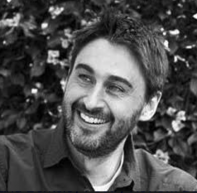
Many writers claim you don’t necessarily need to visit the settings depicted in your work, but for me, it’s a good excuse to travel. Perhaps my most memorable “excuse” came when I was researching a novel involving British prehistory and, for one chapter in particular (published as “Ultraviolet” in Superstition Review), some archaeological sites in Orkney.
I was warned about Orkney. “Gale force winds,” a Scottish friend told me. “Cold rain. Rough seas. The ferry ride alone will make you sick for a week. It’s not Hawaii, mate.”
But as an American resident of Edinburgh, known as “The Athens of the North” for its role in the Enlightenment, I had developed a tolerance for such extremes. And I was curious about Orkney, a group of over 70 islands teeming with prehistoric sites that are reputedly the best-preserved in Europe. I had seen photos of the Ring of Brodgar and the Stones of Stenness, less famous cousins of Stonehenge. I had heard stories about Neolithic tribes, Picts, Vikings, and, most fascinating of all, sailors from the Spanish Armada who had survived a shipwreck off the coast over 400 years ago and gone native, leaving behind a strain of conspicuously dark-eyed Orcadians.
There was history there. And prehistory. And legend and myth. And a couple of whisky distilleries. But what really put my motivation in gear? The Neolithic village of Skara Brae, known as “The Pompeii of the North.”
Pompeii? Ok, it wasn’t exactly Hawaii. But I imagined a volcano smoking on the horizon.
I loaded my bicycle into my car, drove it onto the ferry—let’s call it “The Pacific Princess of the North”—and braced myself for a seven-hour roller-coaster ride. My objective was to visit as many prehistoric sites as possible and, since it was late May, use my bike as much as possible while doing it. I had filled an entire suitcase with thermal layers and raingear. But as we left port, the sky was suspiciously clear. The sea was smooth as glass. Instead of clinging to the bulkhead for dear life, I was standing at the rail with a pint of ale watching the sunset at 10 pm.
The Mainland, as it is known, is the largest island and the home of the local government. The streets of Kirkwall, established by Norse invaders during their 600 year reign, were built narrow against the infamous wind. After some wandering, I managed to find my hotel only to discover Robert, one of the co-owners, tending the bar instead of the reception desk. His attitude, at least, was in the right place.
The next morning I woke to heavy rain, my enthusiasm slightly damp around the edges. At the reception desk a woman named Carol offered encouraging words about the weather. “It’ll lift by afternoon,” she said, in what sounded like a blend of Scottish and Norwegian accents. “The Farm Report on telly—that’s the one to watch. Ignore everything else. The BBC can’t really see this far.”
The accent made sense. And so did the outlook. I had been told that the inhabitants of Orkney, separated from the countries that governed them over the centuries, had a distinct sense of identity. They consider themselves Orcadians first, Scots second. What Americans might call The Texans of the North.
Except this wasn’t Texas weather. I glanced out the window again. I scanned my list of prehistoric sites and noticed one that was far away and relatively isolated from the others. An outlier. A distant target. A good excuse to drive instead of bike. It was called The Tomb of the Eagles: a Neolithic chambered cairn that was found with over 16,000 human and 725 eagle bones inside. These weren’t intact skeletons, but remains that had been disarticulated by way of a prehistoric practice known as excarnation. In other words, the corpses had been left exposed until they were stripped by animals, then deliberately cracked apart and interred. Archaeologists are still puzzling over exactly what sort of religious practices were involved, let alone the beliefs they signified. Photos of the tomb at the time of discovery show skulls arranged on stone shelves, along with an ankle-deep mix of ribs and femurs and tarsals, not to mention eagle talons.
But this was still 22 miles away. Wipers clicking, I drove across several islands linked by causeways known as the Churchill Barriers, constructed to thwart the Germans during World War II and still displaying the occasional mast or rusting bulk of a ship scuttled to block passage. A different kind of excarnation, perhaps.
Signs pointed beyond sheep pastures to the visitor’s center, where I checked in for a hands-on tutorial of the various relics. The Tomb of the Eagles is privately owned, staffed by guides who take an interactive and somewhat playful approach. I was encouraged to hold stone tools, to feel the contours of ancient bones, and peer closely at the upper molars of a skull that had chewed its last meal 5000 years ago. Then I went off to the tomb itself. I followed the path through fields and along a headland with the North Sea churning at the cliffs below.
It was a grassy mound about the size of an RV. The passage into the tomb was low and narrow, requiring a hands-and-knees approach—a common Neolithic feature. In this case, though, the owners had strung a rope along the ceiling of the passage, with a trolley on the floor that a mechanic might use to slide underneath a car.
I glanced around nervously. I was alone. The sea crashed and heaved at the base of the cliff. Then I crouched down and pulled myself in.
It was empty, of course, with vacant side cells and a roped-off corner that was considered unsafe. And the original roof was gone, replaced by a concrete dome with skylights. It should have been a letdown. But I thought of all the hands that had stacked the stones, the regiment of skulls, the scree of bones on the floor. I imagined darkness, the air heavy with death. And those eagle talons.
Had bodies been exposed on the nearby cliffs for the eagles to pick at? And had those very same eagles been captured afterward and sealed in the tomb? I realized this was the nature of the Neolithic—or at least the nature of the Neolithic for us. They took everything apart without leaving instructions for putting it back together again. If you want your history intact and obvious, look elsewhere. This was an imaginative puzzle. Some assembly required.
As I walked back along the cliffs the weather began to lift. I checked my watch. Noon. With this confirmation of the farm report, I drove back toward the Mainland and my appointed tour at Maeshowe, the “finest chambered tomb in Orkney,” which turned out to be another grassy mound, but larger. I was beginning to get the picture.
Maeshowe, though, has special significance. It’s located on a low stretch of land surrounded by hills—a natural amphitheater—within sight of the Stones of Stenness, the Ring of Brodgar, and the Neolithic village of Barnhouse. And it’s impressive.
A guide led a bunch of us down a passageway set with gigantic flagstones into a main chamber about 15 feet high. Still fresh from the Tomb of the Eagles, I recognized the look of the place. The same architect? This tomb, however, had been looted and vandalized long before discovery by our enlightened civilization. The chambers were completely empty, the walls covered in places with “runic inscriptions”—i.e., Viking graffiti. There are references to treasure and, shall we say, unprintable activities.
“Many a woman has gone stooping in here,” one of them reads. “Thorni bedded. Helgi carved,” reads another.
But probably the most remarkable feature of Maeshowe is the alignment of the tomb itself. For several weeks before and after the winter solstice, the sunset shines directly down the passage and illuminates the back wall of the chamber. Historic Scotland, which manages the site, maintains a webcam for those meek souls who want to witness it but don’t care to travel to Orkney at a time of year when dusk occurs during lunch.
I emerged to find it raining again. I pulled up my hood and hiked over to the Stones of Stenness. I crossed the bank and ditch and made my way over to the nearest of the slabs. Originally there had been 12 of them. Now there were only 4. But they had character—thin, sharp, with oblique angles that gave them a certain geological nobility. And there was a central hearth: a stone box set in the ground, where fires had burned for ceremonial rituals and feasts. I looked down into it and imagined heat. The rain stopped. The clouds parted. The sun shone.
There was only one thing left to do. Skara Brae.
Can you handle the truth? It ain’t Pompeii. But consider this: we’re closer in time to Pompeii than Pompeii was to Skara Brae. In other words, it’s more than twice as old. And there it was, built into a midden, which today serves as a kind of viewing platform surrounding the houses. The roofs are gone, allowing visitors to peer down into the structures. Walls, hearths, beds, dressers—all made of stone.
I could go on and on, but you get the idea. Tombs. Standing stones. The remains of Pictish or Viking (or both) hill forts. Wind-swept hills and roaring sea. And it was research. Really. These details are coming to you courtesy of copious notes and photos I took in the field, not to mention hours of additional writing at the hotel every night.
That said, it’s hard to claim any scholarly merit in visiting Highland Park Distillery or the restaurants of Kirkwall, one of which served a prime Orkney fillet steak with pan-seared queen scallops in a light whisky sauce, a kind of locavore extraordinaire, while another, called Dil Se, identified itself as “The Finest Indian Cuisine in Orkney,” which seemed like boasting the Best Mexican Food in Moscow. Or maybe the Tex-Mex of the North? But the saag balti and lamb tikka was worthy of any hemisphere, as was everything else about Orkney. As I boarded the ferry back home, I realized the last place I had enjoyed this much was another group of islands I had visited many years ago. What was the name? Ah yes. Hawaii. The Orkney of the South . . . But that would be a much more expensive novel to write.



